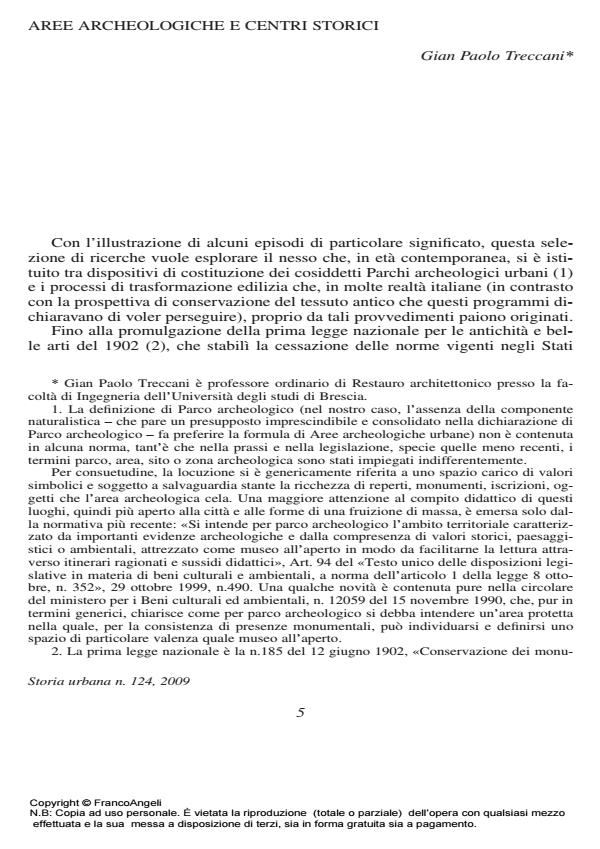Aree archeologiche e centri storici
Journal title STORIA URBANA
Author/s Gian Paolo Treccani
Publishing Year 2010 Issue 2009/124 Language Italian
Pages 15 P. 5-19 File size 677 KB
DOI 10.3280/SU2009-124001
DOI is like a bar code for intellectual property: to have more infomation
click here
Below, you can see the article first page
If you want to buy this article in PDF format, you can do it, following the instructions to buy download credits

FrancoAngeli is member of Publishers International Linking Association, Inc (PILA), a not-for-profit association which run the CrossRef service enabling links to and from online scholarly content.
Archaeological sites and historic centres - Archaeological sites, historic centres, restoration and demolition The author proposes a reflection on the enhancement of archaeological sites in the historic centres of Italian cities. The considered period runs from the nineteenth century to the 1960s. The text investigates the close link that was established in that period between protection and enhancement of archaeological finds and processes of urban transformation, often radical and traumatic, which involved the buildings and road network of inhabited centres. These processes were brought about, with some clear inconsistencies, by the formation of "boundaries of the past". In the book, another topic is also investigated which is related to the original, traditional and cultural premise, rather than an urban prospective. This process is developed through technical and administrative mechanisms that gave rise to some programs which, sometimes, can be considered true urban plans. As the examples exposed in the book show, they did not restrain their activity to erecting enclosures around ruins so as to impose an idea of inviolability; nor was the evocative and symbolic power of the ruins used to infuse an identity into these places. Passing over the present urban system, a scheme of topography and road networks that had already fallen into disuse was "rediscovered", and a new geography of sorts took shape, sometimes totally accidentally, like rents in the stratified labyrinth of a modern city
Gian Paolo Treccani, Aree archeologiche e centri storici in "STORIA URBANA " 124/2009, pp 5-19, DOI: 10.3280/SU2009-124001